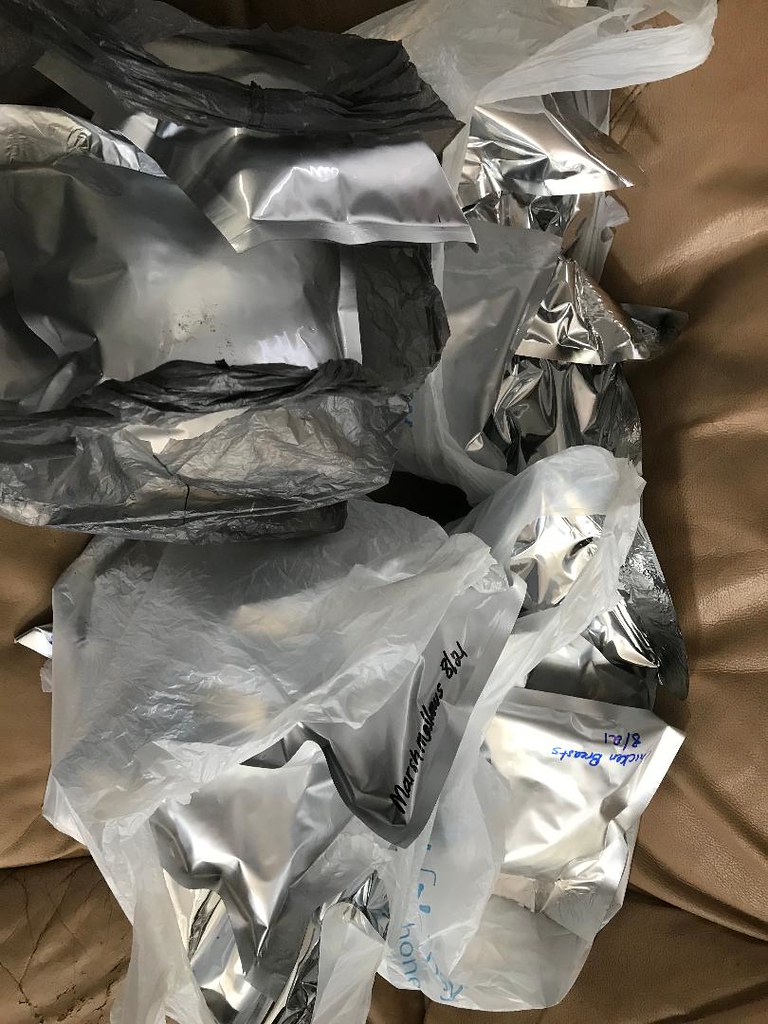a few bags ready to go
I wanted to get a picture and share it before I sent out another batch in case others would like to do the same. I am very tired. I have been measuring, labeling, and sealing food into mylar bags and then putting those into kits for 4.5 hours. I will give leave some of these for the homeless tonight. I know I need to make a post about this now before it slips my mind yet again.
With rising food prices, more and more people are being forced into desperate situations. I believe we, as the Church, if we are able, should help alleviate suffering by tending to people's needs while sharing the gospel.
Dried beans, rice, powdered milk, salt, pepper, spices, sugar, flour, oatmeal, grits, Pop Tart type toaster pastries, yeast packets, are all very well received by those living in the forests in our surrounding cities and counties.
I originally packaged, and still will if necessary, dried goods in freezer bags. I started using mylar a few years ago. The mylar helps protect food from the air and moisture better. Moisture is a big problem for those who live in tents or bush-crafted dwellings. Mylar packaged foods give them a backup food source for when times are lean. Buying it in bulk allows me to get a cheaper price, but it has to be divided up to help the people who need it.
If you own a dehydrator, you can share more dried items. I have dried and shared blueberries, strawberries, marshmallows, chicken breasts, hamburger, sausage, mixed vegetables (use frozen), corn (use frozen), apple slices, orange slices, cabbage, collards, cheese, etc. I always put a moisture absorber in these items.
There are very tiny bags you can purchase to hold small quantities of vitamins and OTC medications.
Canned and boxed goods can be added into the bag or box with mylar bags. I have also packaged them in 5 gallon buckets and plastic household storage containers.
A few clothespins included in the box will help close the bags after opening to help keep the contents fresh until used. Some of the mylar bags I use can be sealed with heat and have a zipper closure that can be used once opened.
If you own an iron, then you can seal mylar bags. I have sealed hundreds of them with mine with no issues. I have even washed and reused mylar bags that came from the grocery store or came through the mail when I ordered something. You can also re-seal potato chip type mylar bags once you learn the settings on your iron. Tip: Thinner bags need less heat than thicker bags. Start low and add heat until you can get a seal. I wrote the temperature settings on my iron with a permanent marker.
These food kits can be left where you know the homeless frequent. In my area, there are two groups behind two different grocery stores. The local restaurants, convenience stores, and vegetable department managers of some grocery stores will leave things beside the dumpsters for them. If you see this happening, those can be a good place to leave a food gift.
We also make kits for ourselves for when we go camping, hiking, or on an all-day trip. We have also shared them with the elderly and disabled. They can be stored for hurricanes or other natural disasters too. I'd like to get to where I have nine five-gallon buckets packed with dried foods, water, and toiletries where we can grab and go if we need to evacuate. However, there are 8 of them and one of me. They will rob the buckets if they can't find what they need. I can not think of anywhere I can hide them all either.
A few different gospel tracts, a thrift store purchased Bible, and some Chrisitan reading material are easy to include in the boxes.
There are some in the homeless community who are hiding from the law. The keyword there is "some." This is a fact. Those individuals make face-to-face encounters very risky. Others may not be able to cope with human interaction and just want to be left alone. It is best to go with a group or to leave things where they can find them.
